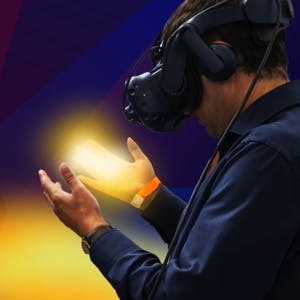- Home
- All updates
- EDGE Insights
- Industries
- Company Search
- My Watchlists (Beta)
All updates
Meta announces Orion prototype AR glasses at Connect 2024 conference
Orijin raises seed funding for product development and expansion
Orijin raises seed funding for product development and expansion
Perplexity adds OpenAI o1 model and develops homepage widgets
Nikola partners with WattEV to supply 22 BEVs
Zebra Technologies to acquire Photoneo from Photoneo Brightpick Group for undisclosed sum
Scope Technologies increases private placement offering to CAD 1.8 million
Firefly Neuroscience raises USD 12.4 million in growth funding to commercialize technology
Nasdaq affirms delisting of OpGen after failed appeal
Rumble raises USD 775 million in strategic investment to support growth
InstaDeep releases open-source genomics AI model Nucleotide Transformers

Extended Reality
Meta announces Orion prototype AR glasses at Connect 2024 conference
-
Meta announced a prototype version of Orion, its first-ever AR glasses. The company is also working on a "neural interface" to control the glasses.
-
Orion uses MicroLED projectors inside the frame to beam graphics onto silicon carbide lenses, creating a heads-up display. Key features include a 70-degree field of view (FOV), seven embedded cameras for various tracking functions, and the ability to interact with AI and holograms.
-
The glasses work with a wireless compute puck and a neural wristband that interprets hand gestures using electromyography. Meta’s 2019 acquisition of brain-computer interface (BCI) company CTRL-labs likely bolsters the "neural interface" capabilities.
-
Meta claims Orion represents a significant step forward in AR technology, offering a larger FOV in a smaller form factor than competitors. The company sees potential applications in communication, AI interaction, and as a replacement for smartphones. However, due to high production costs and technical challenges, Meta has postponed Orion's consumer release, focusing instead on refining the technology for future iterations.
-
Analyst QuickTake: The prototype version of the Orion AR glasses is noticeably smaller than Snap’s recently announced Spectacles 5 and seeks to add BCI functionality for ease of use. However, the device is rumored to not be released until 2027 or later, with Meta abandoning custom chip development for the glasses in light of cost concerns.
Contact us
By using this site, you agree to allow SPEEDA Edge and our partners to use cookies for analytics and personalization. Visit our privacy policy for more information about our data collection practices.